- News
- Reviews
- Bikes
- Components
- Bar tape & grips
- Bottom brackets
- Brake & gear cables
- Brake & STI levers
- Brake pads & spares
- Brakes
- Cassettes & freewheels
- Chains
- Chainsets & chainrings
- Derailleurs - front
- Derailleurs - rear
- Forks
- Gear levers & shifters
- Groupsets
- Handlebars & extensions
- Headsets
- Hubs
- Inner tubes
- Pedals
- Quick releases & skewers
- Saddles
- Seatposts
- Stems
- Wheels
- Tyres
- Tubeless valves
- Accessories
- Accessories - misc
- Computer mounts
- Bags
- Bar ends
- Bike bags & cases
- Bottle cages
- Bottles
- Cameras
- Car racks
- Child seats
- Computers
- Glasses
- GPS units
- Helmets
- Lights - front
- Lights - rear
- Lights - sets
- Locks
- Mirrors
- Mudguards
- Racks
- Pumps & CO2 inflators
- Puncture kits
- Reflectives
- Smart watches
- Stands and racks
- Trailers
- Clothing
- Health, fitness and nutrition
- Tools and workshop
- Miscellaneous
- Buyers Guides
- Features
- Forum
- Recommends
- Podcast
news
“It’s my town too, and I want a cycle lane”: Campaigner calls for “de-normalisation of cars” and slams anti-cycling opposition over “a handful of parking spaces” – but ex-racing cyclist says “I never liked bike lanes”; Froome 2026? + more on the live blog
SUMMARY
 Active Todmorden Project (Todmorden Town Deal)
Active Todmorden Project (Todmorden Town Deal)05 February 2025, 09:07

“It’s my town too, and I want a cycle lane”: Campaigner calls for “de-normalisation of cars” and slams anti-cycling opposition over “a handful of parking spaces” – but ex-racing cyclist says “I never liked bike lanes” amid 2,000% cycling boost aim
A cyclist in Todmorden – the West Yorkshire town at the centre of a heated debate over a major cycle lane project, which saw a public consultation on the plans cancelled in October after police were called due to “disruptive and intimidating” behaviour” – has criticised locals who successfully campaigned to bring a halt to the scheme over “a handful of parking spaces”, arguing “it’s my town too, and I do want a cycle lane”.
Meanwhile, a Green Party councillor for the area has also claimed that the main reason residents opposed the cycle lane plans was simply because they “don’t cycle” – leading him to question “whether that’s a strong enough reason for us to be influenced by it”, in a borough that needs to see a 2,000 per cent increase in cycling numbers if it’s to hit its climate targets by 2038.
Last week, Calderdale Council’s place scrutiny board debated the future of its active travel agenda, after the petition ‘We Support Cycle Infrastructure in Todmorden and Calderdale’, organised by Hannah Dobson, was signed by over 1,000 locals.
According to Dobson, she started the petition after seeing signs erected in Todmorden opposing the town’s proposed active travel project with the slogan “Our town, our decision”.
As we reported last autumn, the ‘Active Todmorden’ project aimed to use £3.244 million of funding from central government to “enable people to walk or cycle as part of their everyday journeys” by creating walking and cycling routes in the town. A cycle route along a main road into the town was proposed, alongside improvement to “provide an accessible, attractive, legible pedestrian environment in the town centre”.
However, while many expressed positivity at the investment in the area, there was some strong criticism from an outspoken section of the community angered at the potential loss of parking spaces and the claimed effect on business in the town.
The organiser of a fundraiser titled ‘Save Todmorden Town Carpark’, which raised £1,280, with “all funds to be spent opposing the unpopular initiatives” argued the cycle lane “will cause months of disruption to the middle of town, discouraging residents and tourists from visiting and affecting retail and hospitality businesses in town”.
However, Dobson’s petition supporting the proposals suggested there is a section of the community “outraged by having to walk an extra few yards from their car”, who she accused of “trying to stoke fear and opposition” among residents.
And in October, police were called during a public consultation in the town, after the council claimed a “small number of people were disruptive and intimidating, making it difficult for other people to participate and share their views”.
One resident described the scenes at the consultation as “appalling” and said: “There’s passion and protest and then there’s aggression and threat, this crossed the line.”
A second engagement session scheduled for a day later was subsequently cancelled by Calderdale Council to “protect members of staff involved”.
Since then, the cycle lane proposals have been dropped from the ‘Active Todmorden’ project.
But speaking at last week’s council meeting, cyclist Dobson criticised the local authority’s decision to bow to the pressure exerted by the town’s anti-cycling campaign, arguing that “doing nothing” – the most popular response during the consultation – was not an option.
Referring to the “our town, our decision” banners opposing the cycle lane plans, Dobson told the meeting: “I thought ‘it’s my town too, and I do want a cycle lane, please’. So I started this petition to try and give a voice to those who would like more safer places in Calderdale to ride.”
“Our infrastructure is clogged, our air quality is regularly unsafe, and we can’t build more road space in our narrow valley.
“Even if we could, the evidence is clear that demand grows to fill road capacity – more space for cars is not a solution.”
According to Dobson, cycling offers a “real and impactful solution” and it was the role of the public sector to take decisions in the collective interest, the Halifax Courier reports.
“The petition calls on you to show leadership, to act as our public representatives should and to have the vision to make evidence-based decisions for our collective benefit – our towns, your decisions and our future,” the campaigner said.
After hearing councillors outlines their climate and health objectives, Dobson said she felt like she was simply hearing a lot of excuses.
“If you keep letting people stopping things happening over a handful of parking spaces, we will never have change,” she said.
“You have to de-normalise cars, you have to give space to people on bikes and people on foot and that is going to change our landscape – in our grandparents’ lifetimes we have completely reshaped our landscape around cars, so we can do it again, to make it about people.
“You just have to stop talking and planning and do it.”
The Labour-run council’s deputy leader Scott Patient responded to Dobson’s concerns by noting that, if the borough is to meet its climate and emissions targets by 2038, it needs to increase cycling numbers by 2,000 per cent.
He agreed there was a need to go “faster and further”, but admitted that consultation and engagement also needed to be better and council policy made clearer.
Meanwhile, Sarah Courtney, a cabinet member for regeneration and transport, said: “It’s important we balance the needs of all residents and businesses. We really need to be delivering the right active travel schemes in the right places.”
Green Party councillor Martin Hey also said he spent some time discussing the issue with residents on their doorsteps over the winter.
“It is true it came up on the doorstep that people didn’t want the cycle lane,” he said. “But I can tell you the main reason why that people gave was ‘I don’t cycle.’
“And we’ve got to consider whether that’s a strong enough reason for us to be influenced by it.”
However, not everyone was supportive of Dobson’s suggestions.
Conservative councillor Regan Dickenson, a former amateur racing cyclist, told the meeting that he had “never liked cycle lanes for a number of reasons” (way to play up to the racer stereotype, Regan).
“With every respect to your petition and sympathy for it, what is also recognisable is there are a lot of people who aren’t in favour of it as well,” he said.
He agreed there was a requirement to change people’s minds, arguing that promotion of and improving the canal towpaths of cycle ways could create a “green artery”.
However, Patient said the council did not own the towpath in question and, in any case, there were issues with it, due to its tendency to ice over and its location next to a body of water.
Meanwhile, Dickenson’s Tory colleague Steven Leigh claimed Calderdale had already invested in “many contentious cycle lanes”.
“I think there’s a lot of provision for infrastructure for cycling in Calderdale,” he said. “It is a subject which divides opinion – some think it’s good, some think it isn’t – but there’s cycle lanes all over the place that we have demonstrably supported.”
However, Dobson pointed out that this infrastructure was “piecemeal” and unconnected.
“You can’t make a sensible journey using little pockets of infrastructure,” she said.
05 February 2025, 16:29

“What’s happening is that they’re disputing about Eurosport going to TNT Sports in the UK and hiking the price up”: Belgian cyclist slaps rival around the back of the head during argy-bargy at the cyclocross, as both riders disqualified
There must be something in the water at the Exact Cross.
Almost four months after Eli Iserbyt was disqualified at the series’ opening event in Beringen, way back in October, for angrily stamping on Ryan Kamp’s rear mech after a coming together on a corner, tempers flared once again at today’s race in Maldegem, and led to both Jinse Peeters and Manon Bakker being chucked out mid-race.
On the fourth lap of the Belgian race, won by Luxembourg champion Marie Schreiber, Peeters and Bakker were challenging for a place in the top ten when they appeared to get tangled up while battling to enter a corner.
In the footage, Dutch rider Bakker can be seen shoving Peeters – seemingly to break free from the entanglement and move her out of the way – causing the Belgian to lash out and slap her rival around the back of the head, a reaction 10-time British champion Helen Wyman tactfully described in commentary as “not necessary”.
Ultimately, both riders were disqualified by the race jury for the unsavoury incident, though it’s fair to say neither of them looked overly pleased crossing the line after being informed of the decision, with Peeters visibly showing her frustration in the direction of the officials.
And while the exact (excuse the pun) cause of the incident is still unclear, one viewer – commenting, rather pointedly, under Eurosport’s Instagram clip of the incident – reckons they know what prompted the spot of mid-race argy-bargy.
“What’s happening is that they’re disputing about Eurosport going to TNT Sports in the UK and hiking the price up, because everyone else has so why shouldn’t we,” wrote Christian.
Classic.
05 February 2025, 17:36
“Paint is not protection, here’s why…”
05 February 2025, 16:58
“The council is knowingly proposing to build something which is not safe”: New cycle route branded “dangerously deficient” by campaigners – as cyclists forced to dismount for narrow carriageway crossing
Norfolk County Council has been accused by cycling campaigners of “knowingly proposing to build something which is not safe”, after work started this week on a new cycle and walking route on the edge of Norwich – which will force cyclists to dismount to cross a “dangerous” narrow bridge next to the busy A47.
The scheme was first proposed almost a decade ago, after Persimmon Homes and Taylor Wimpey agreed to fund the active travel project in exchange for planning permission to build new homes in Easton.
But Norwich Cycling Campaign says the scheme – originally intended to provide an alternative to driving for people living in the new homes, as well as Easton College students and visitors to the Norfolk Showground – is not safe, as it requires cyclists to walk for 200 metres along a two-metre-wide footpath over the A47 bridge.
“What’s being built fails to comply with the current design standards for building cycling infrastructure, is dangerously deficient, and fails to provide a convenient and attractive route,” Peter Silburn, chairman of Norwich Cycling Campaign, said this week.
“There are issues like the 200-metre-long section where cyclists are expected to get off and push, the slip road crossings being only pedestrian crossings, rather than toucan crossings for both pedestrians and cyclists, and the lack of a safety barrier on the bridge to prevent lorries mounting the pavement or pedestrians and cyclists falling into the road.”
Focusing on the narrow footpath in particular, the campaign said: “As no-one will want to walk or cycle close to the passing traffic this means only about 1.5m of usable pavement will be available. Because of this narrow width, it will be difficult for two pedestrians to pass without one having to walk close to the traffic.
“It will be even more difficult for two people pushing bicycles to pass. There is a serious risk that people will step into the road in order to get past each other, or may perhaps fall or slip into the road.”
After corresponding with the local authority, the campaign also noted that the council acknowledged that, despite plans to install signs advising people on bikes to get off and push, “at least some cyclists will not dismount, and it is not reasonable to expect they will”.
“In accepting that some people will cycle across the bridge – which is clearly going to happen – Norfolk County Council is knowingly proposing to build something which is not safe,” the group said.
Meanwhile, spokesperson for Norfolk County Council said it was “unfortunate” a cycle lane could not be built over the bridge and even admitted that design standards had changed since 2016, rendering the plans hopelessly out of date, but that the local authority could only require the scheme to be built in accordance with planning permission granted at that time.
“The width across the existing bridge physically constrains the highway space available to the scheme, and, in the absence of the substantial funding required to replace the bridge with a wider deck, those wanting to cycle across the bridge are asked to dismount for this short section,” the spokesperson said.
“We acknowledge current guidance would be for those walking and cycling to have sufficient space to cross the bridge together, but this simply isn’t possible within the space constraints and availability of funding and was not a requirement of planning permission.”
05 February 2025, 15:56
Wait, there’s more racing! Lidl-Trek take the spoils in Valenciana TTT, while Sweeck and Schreiber nab wins at the post-worlds ‘cross
If watching bike races on the TV is your thing, it’s been a pretty good afternoon (and I suppose you better enjoy it while it lasts).
While Magnier punched his way to victory in France, down in the Spanish province of Alicante we were treated to the first team time trial of the season, which saw Lidl-Trek come out on top on the 34km course in Orihuela, beating Jayco-AlUla by a whopping 46 seconds and UAE Team Emirates by 50.
That means the American team’s up-and-coming time trialist and puncheur Mathias Vacek will be in the leader’s jersey for tomorrow’s potentially decisive Cat 1 summit finish to Benifato (via everyone’s favourite training climb, the Coll de Rates).
TTTs and first category mountain finishes? Now we’re talking.
Of course, all those time trial helmets, sleek aero positions, and sunny shots would make you forget that there’s still some life left in the cyclocross season.
But over at the Exact Cross in Maldegem, Laurens Sweeck made the most of his post-worlds form, just edging out Eli Iserbyt after a thrilling head-to-head duel:
While in the women’s race, Marie Schreiber – second to Zoe Bäckstedt in the U23 worlds at the weekend – delivered a knockout blow (and that was just the celebration) to beat the in-form Inge van der Heijden to take her sixth win of the season, with just weekends of ‘cross left.
Ah, I’m going to miss watching all this cycling on the tele, you know…
05 February 2025, 15:18
Soudal-Quick Step’s newest sprint star Paul Magnier lays down ominous marker for 2025 with superb win in brutal uphill sprint at Étoile de Bessèges
Road racing! Narrow roads! Brutal uphill sprints! We’re back, baby.
While the Mallorcan warm-ups, Aussie scorchers, and Middle East sportswashing exercises all have their merits, certainly, for many fans this week marks the start of the ‘real’ cycling season (until, of course, the other ‘real’ start of the season at Opening Weekend).
And for Soudal-Quick Step’s hotshot young sprinter Paul Magnier has started with a bang, as the 20-year-old Frenchman demonstrated his staying power, speed, and timing to win the opening stage of the Étoile de Bessèges, on its traditional brutal uphill sprint finish in Bellegarde.
At the end of 159km during which the wind threatened but ultimately failed to wreak havoc on the bunch along the narrow country roads of southern France’s Gard region, a chaotic final kilometre saw Lotto’s Lionel Taminiaux put in a blistering lead-out for Arnaud De Lie.
But as the gradient eased towards the line, Belgian champion De Lie’s legs exploded just as Red Bull-Bora’s Jordi Meeus hit the front. But the German’s effort only served to tee things up perfectly for Magnier, who came around him in the final few metres to make it one from one for 2025, and secure the sixth victory of his fledgling pro career.
Magnier, who dominated the sprints at last year’s Tour of Britain, winning three stages, has been talking in the French press this week about improving his punch on the climbs, and possibly targeting Milan-Sanremo.
Judging by today’s evidence, you’d be a fool to write the kid off.
05 February 2025, 14:38
Can the new kids finally knock GoPro off its perch? We've been testing to find out...
05 February 2025, 14:16
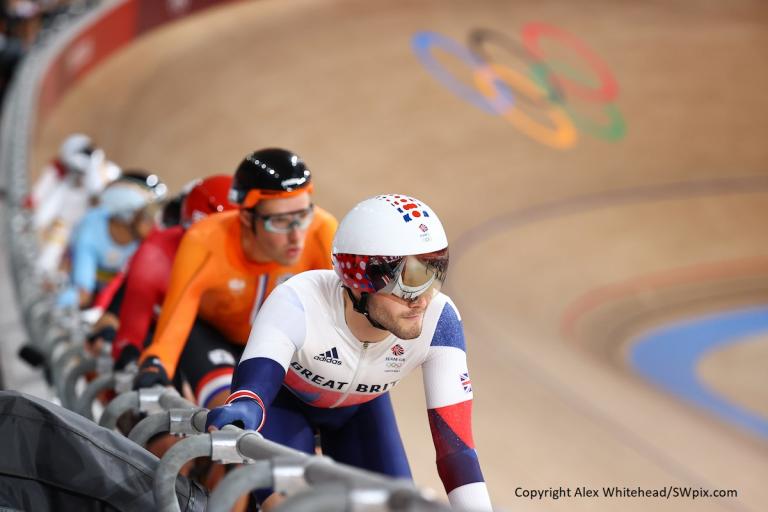
Former Olympic omnium champion Matt Walls set to make track return, almost three years after horrific crash into crowd at Commonwealth Games
Paris may only seem like yesterday, but the countdown to LA ’28 has already begun – at least in the track cycling world – as Wednesday marks the start of the 2025 European track championships in Zolder, Belgium.
And with Great Britain looking to give their up-and-coming academy prospects some healthy international experience three years out from the next Olympics, one rider to keep an eye out for is 2021 Olympic omnium champion Matt Walls, who will be making his long-awaited comeback to the boards, two-and-a-half years on from his horrific crash into the crowd at the 2022 Commonwealth Games.
Walls, one of just three former Olympians in GB’s Euros squad, suffered serious concussion when he was catapulted over the barriers and into the spectators during qualifying for the Commonwealth Games scratch race in the Lee Valley velodrome in July 2022, an incident which sparked calls to increase safety measures at velodromes and led to the installation of taller Perspex barriers around the London track.
(Alex Broadway/SWpix.com)
Since the crash, which curtailed his 2022 season, Walls – a three-time European champion on the track, as well a gold and silver medal winner in Tokyo in the omnium and madison, respectively – has focused on life on the road.
The 26-year-old has started the 2025 season, his second with Groupama-FDJ since moving from Bora, positively, taking third in the sprint on stage one of the Tour Down Under.
Walls will be joined in GB’s men’s endurance squad for the championships by former scratch race world champion Will Tidball, Rhys Britton, Josh Charlton, Michael Gill, Noah Hobbs, his new madison partner Will Perrett.
Olympic silver medallist Neah Evans and Anna Morris, a bronze medallist from Paris, will lead the women’s endurance squad, alongside Sophie Lewis, Maddie Leech, and Grace Lister.
On the sprinting side, 2023 European team sprint silver medallist Lauren Bell will race with debutants and under-23 team sprint European champions Rhian Edmunds, Iona Moir, and Rhianna Parris-Smith.
Up-and-coming sprinter Harry Ledingham-Horn will also be leading teammates Lyall Craig, Hayden Norris, and Harry Radford in their maiden European championship appearance.
“Having had some fantastic results on the track at last summer’s Olympic Games, it will be exciting to see our Olympians back in track competition competing for European titles,” GB’s performance director Stephen Park said.
“This event is also a fantastic chance for some of our up-and-coming riders, who have been inspired by the Games to make themselves known as ones to watch for LA.
“As a team LA 2028 is already firmly front of mind, and this competition gives us an exciting opportunity to try out some new line ups and new strategies and see how we stack up against the rest of Europe.”
05 February 2025, 13:29
The “avid cyclist” in their natural habitat… driving their car in the cycle lane
Avid cyclist @carsnbikelane.bsky.social
— CrosswalkCrusader (@crosswalkcrusader.bsky.social) February 4, 2025 at 3:01 PM
Deary me – did they assume the cycle lane signs also meant ‘bikes strapped to the back of cars?’
05 February 2025, 12:59
“I’m not for it. It’s taking away two lay-bys and a bus stop”
05 February 2025, 12:48

Legendary Tour de France announcer Daniel Mangeas to miss Étoile de Bessèges after suffering stroke
With the early season now well and truly underway, the Étoile de Bessèges kicks off this afternoon with a 159km loop around Bellegarde, complete with a very Mads Pedersen-friendly kicker at the finish.
However, the annual French stage race tune-up will be without one of the sport’s most recognisable voices, after it was announced this week that legendary race announcer Daniel Mangeas has suffered a stroke.
The 75-year-old was the Tour de France’s announcer and on-site commentator for 40 years between 1974 and 2014, keeping fans by the side of the road up-to-speed with the action, and since stepping down from that role has continued to announce at dozens of races across France.
Mangeas’ family say his condition is stable, and we wish him well.
05 February 2025, 12:03
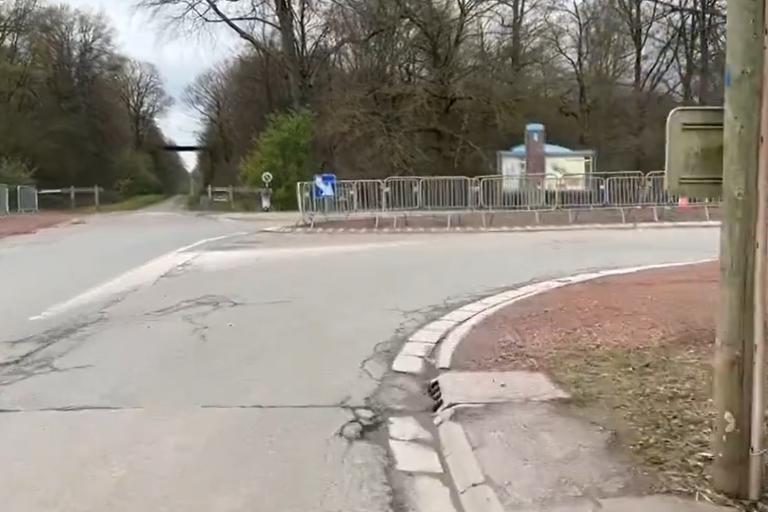
Paris-Roubaix organisers drop controversial ‘chicane’ at Arenberg Forest entrance for 2025 race – replacing it with “small detour” to “slow down the riders in a more fluid manner”
Ah, Arenberg Forest chicane, we hardly knew ye.
After just one edition of Paris-Roubaix, the controversial ‘F1-style’ entrance to the Hell of the North’s most famous stretch of jagged cobbles – which sparked plenty of pre-race discussion but ended up relatively uneventful – is no more, to be replaced by a “small detour” around Arenberg’s mining site, the classic’s organisers confirmed this morning.
Last year, ASO decided, at the last minute, to introduce a series of sharp bends just before the start of the Trouée d’Arenberg, forming a motor racing-style “chicane”, after the CPA pro riders’ union urged the organisers to introduce to slow down the riders, and therefore increase their safety, as they approached the infamous sector.
For those unfamiliar with the legendary Arenberg, the 2.3km stretch of jagged, unruly cobbles – even by the misshapen standards of the Hell of the North – forms one of the pivotal moments in the men’s Paris-Roubaix, coming with around 100km to go as the action starts to heat up (it’s yet to be featured in the women’s version, despite the protests of the sport’s leading riders).
It is often marked both by the crash-filled chaos contained within the forest, and the fight for position that precedes it, with the bunch barrelling towards its gloomy entrance at speeds of over 60kph – hence last year’s attempt to slow things down on the approach.
The introduction of the chicane, however, divided fans and pundits, with eventual winner Mathieu van der Poel describing it as a “joke”, and former British champion Brian Smith predicting that “most will be walking round this dogleg”.
(Alex Whitehead/SWpix.com)
And while these gloomy predictions didn’t come to fruition, the organisers have opted for a different approach (pardon the pun) for this year’s race.
“This year, we have found an alternative that allows us to slow down the riders in a more fluid manner, via a small detour that runs alongside the mining site in Arenberg,” race director Thierry Gouvenou said in a statement today.
“With this introduction, there will be four right angle corners in the kilometre before the Trouée d’Arenberg.”
This year’s men’s Paris-Roubaix, which will take place on 13 April, will also include two brand-new sectors of 1.3km and 1.2km respectively, around 30km from the Arenberg.
“They are not especially difficult portions, but by introducing them here, it provides us with a sequence of five sectors without virtually any tarmac,” Gouvenou said, adding that one of the race’s early sectors has been removed, bringing the total number of cobbled stretches this year to 30.
The Arenberg-less women’s edition of Paris-Roubaix, meanwhile, remains unchanged, and will feature 29.2km of cobbles over 148.5km on 12 April.
05 February 2025, 11:23

“Until London has a truly safe inclusive network designed for everyone, we’ll lag behind”: Almost a quarter of London’s “high-quality” cycle network is unsafe after dark, disproportionately affecting women, new report finds
A new report launched today by the London Cycling Campaign’s Women’s Network has found that a worryingly high percentage of Transport for London’s cycling infrastructure is “socially unsafe” outside of daylight hours, presenting a risk of harms due to factors such as isolation, poor lighting, and a lack of escape routes, disproportionately affecting women and putting them off cycling in the process.
As part of the report, ‘Women’s Freedom After Dark: Are TfL’s Cycleways safe for everyone, 24/7?’, volunteers from the LCC’s Women’s Network assessed and mapped the entirety of TfL’s current Cycleway network against rigorous criteria on social safety.
According to their findings, 24 per cent of the TfL cycle network is “socially unsafe” after dark, while 58 per cent of cycleway feature at least one socially unsafe section. Meanwhile, seven the capital’s cycleways were deemed to be 100 per cent socially unsafe after dark, and 11 are at least 70 per cent unsafe.
The report and its concerning findings come a year after the LCC’s assessment of ‘What stops women cycling in London?’, which detailed the shocking extent to which women riding their bikes in the capital face a barrage of verbal and physical abuse, sexual harassment, and intimidation from motorists and other road users.
Publishing their report into London’s unsafe bike paths today, the LCC noted that TfL’s Cycle Route Quality Criteria tool, which sets the minimum standard for the body’s infrastructure, does not include any criteria on directness of route or social isolation.
“As a result, councils and TfL have been building and signing routes away from main roads because it is politically convenient, but the result has seen an increasing number of Cycleway routes designed, delivered and signed into the network that simply aren’t suitable for and available for women to cycle on during the winter and after dark,” the report says.
Case studies featured in the report include Cycleway 1, which passes next to Millwall Stadium alongside an isolated railway line where muggings and bikejackings have been reported; the Grand Union Canal Cycleway, which according to the LCC has “enabled TfL and five west London boroughs to avoid delivering a more inclusive alternative”; and a “crime-ridden and isolated underpass” in Enfield, where a “far more inclusive crossing of the major North Circular road is clearly needed for pedestrians and those cycling”.
Following the report’s publication, the LCC Women’s Network, a coalition of individual women and organisations focusing on women cycling in the capital, are calling for a range of changes to how the city’s cycleways are designed, planned, and delivered.
These include calling on TfL to add ‘social safety’ and ‘directness’ to its Cycle Route Quality Criteria, “ruling out poorly lit, isolated areas and convoluted, indirect routes”, and in doing so urgently bring all current cycleways up to this new quality criteria standard, by upgrading or rerouting existing sections.
The network also believes that TfL should not approve or fund council delivery of routes that do not meet this updated criteria, arguing that “leisure routes in parks are a valuable resource but should not count or be funded as part of TfL’s core cycle network”.
TfL, councils, and the police should also make leisure routes safer, with more CCTV and lighting in places like underpasses, particularly at crime ‘hotspots’, the network says, while also calling for Active Travel England to develop new guidance on cycle infrastructure and social safety, including the adoption of ‘Dutch’ underpasses, deemed to be “more welcoming”.
“Half of all Cycleway routes have sections which aren’t usable by most women after dark, which add up to a quarter of the entire length of the cycle network,” says Women’s Network member Kate Bartlett, interviewed last year on the road.cc Podcast.
“Women make only a third of all cycle journeys in London – they make over half of all cycled journeys in the Netherlands. Until London has a truly safe inclusive network designed for everyone, we’ll lag behind.”
05 February 2025, 09:53
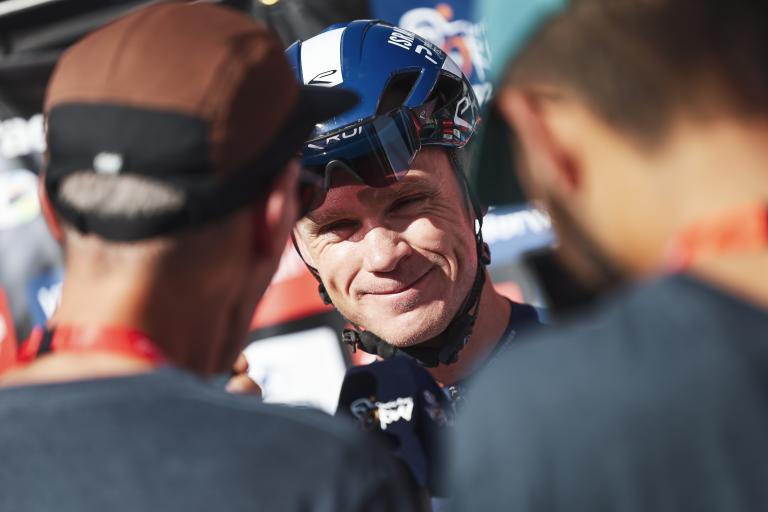
They think it’s all over… but it turns out he might have another year left in him: Chris Froome “keeping door open” to racing in 2026 – after admitting in December “I think it’s time to retire”
This May will mark seven years since four-time Tour de France winner Chris Froome’s 46th and, as it stands, last victory as a professional cyclist, at the 2018 Giro d’Italia.
Remarkably, that winless drought has lasted longer than the period between Froome’s first pro victory, his breakthrough stage win and (eventually successful) GC challenge at the 2011 Vuelta a España, and that epic, come-from-behind triumph in Italy, his seventh grand tour victory.
The speed with which this era of cycling has left Froome, the dominant stage racer of the 2010s, behind – especially since his career-threatening training crash at the 2019 Criterium du Dauphiné – has meant that retirement has been a constant theme for the Israel-Premier Tech rider throughout the 2020s.
The 39-year-old’s best result in 2024 was a 21st on stage six of the Tour du Rwanda, while his brief forays into elite European stage racing (what used to be his bread and butter during the glory years at Sky), at Tirreno-Adriatico, the Critérium du Dauphiné, and the Arctic Race of Norway yielded nothing higher than 70th.
In October, when a 142km stint in the morning breakaway at the Tour of Guangxi in China saw him abruptly dropped as the race hotted up with 40km to go on a Cat 3 climb, Froome was branded the “worst signing in history” and a “part-time clown” by former Rabobank climber and whereabouts deceiver Michael Rasmussen.
(Alex Broadway/ASO/SWpix.com)
“It is undignified to look at,” Rasmussen, who was kicked off the 2007 Tour de France while on the cusp of winning the race after he was found to have lied about his whereabouts for testing, said.
“The wild thing is that it is his own decision. You can say that for five million euros a year you can probably take a few defeats along the way. Sportingly, it’s pretty meagre. It is an undignified end to a career like his.”
Of course, Rasmussen wasn’t the first to question Froome’s position at Israel-Premier Tech, the squad he joined in 2021 after his hugely successful decade-long spell at Team Sky/Ineos.
Even IPT’s co-owner Sylvan Adams publicly stated that Froome did not represent “value for money” for his team, after the British rider claimed he felt “let down” due to being omitted from the squad’s 2023 Tour de France line-up, and that his form had suffered from “frustrating” equipment issues.
But in December, it all looked like it was finally coming to an end anyway, after Froome hinted that this year’s Vuelta a España could be his swansong in the pro peloton.
(ARN/Aurelien Vialatte)
“This is the race for me where it all began in 2011,” he said at the route unveiling in Madrid. “Next year would potentially be my last season racing and to finish at the Vuelta could be a really nice way to close the circle, having started at the Vuelta, to finish at the Vuelta as well. That could be very special.
“I think it’s time. Next year I'm going to be 40. It was always my goal to be racing until the age of 40, so I’m getting closer to that goal. I can be very happy with everything that I’ve been lucky to achieve in the sport.”
However, while that admission was enough for Pro Cycling Stats to stick the dreaded ‘will retire on 2025-12-31’ on Froome’s page, the four-time Tour winner – still a couple years off the 42 that Alejandro Valverde, cycling’s own Dorian Gray, was when he retired at the end of 2022 – suggested this week that it’s not beyond the possibility that he could still be pinning a number on in 2026.
Speaking to Ned Boulting and David Millar for their Never Strays Far podcast, Froome said: “I haven’t 100 per cent decided that I’ll be retiring at the end of this year.
“Chances are, yes, I’ll be calling it a day, but I’m just keeping the door open. [I’ll] see how this year goes, see how I’m feeling towards the end of it.”
(Zac Williams/SWpix.com)
Froome even admitted that, after 17 years in the bunch, he still wasn’t sick of the pro cycling lifestyle.
“Once you’re into it, you’re into it!” he said.
So… you’re saying there’s a chance I’ll still be writing these ‘Will Froome retire?’ blog stories next February?
05 February 2025, 10:57
Tour de France advent calendars at the ready, because it’s only five months to go until the big one…
05 February 2025, 10:35
“Like they were tipped off that our address has expensive bikes”
After obtaining a PhD, lecturing, and hosting a history podcast at Queen’s University Belfast, Ryan joined road.cc in December 2021 and since then has kept the site’s readers and listeners informed and enthralled (well at least occasionally) on news, the live blog, and the road.cc Podcast. After boarding a wrong bus at the world championships and ruining a good pair of jeans at the cyclocross, he now serves as road.cc’s senior news writer. Before his foray into cycling journalism, he wallowed in the equally pitiless world of academia, where he wrote a book about Victorian politics and droned on about cycling and bikes to classes of bored students (while taking every chance he could get to talk about cycling in print or on the radio). He can be found riding his bike very slowly around the narrow, scenic country lanes of Co. Down.
Latest Comments
- ktache 2 sec ago
Not enough awareness as a driver to notice those 30mph limit roundalls.
- Destroyer666 9 min 24 sec ago
Oh dear, to your own lack of understanding. I was not referring to your vague generalisation of "people", I was referring to a particular...
- chrisonabike 1 hour 28 min ago
Also check if you have a SLamb chop or a Camporknolo one - they're not interchangeable.
- chrisonabike 1 hour 30 min ago
Easy one that: it wasn't "so much traffic" before the cyclist was there! That queue had been building up behind the cyclist since the lane was...
- eburtthebike 1 hour 37 min ago
"It’s very expensive, I suspect, and I think it’s too much.”...
- lesterama 1 hour 57 min ago
Looks like he's risking riding without inserts. Didn't Fred Wright come a cropper in the Arenburg for the same reason?
- HLaB 2 hours 17 min ago
Nice one, with the clocks change you've done the hard part. I think I done 5 years in a row of imperial centuries a month with the odd 200k thrown...
- Daclu Trelub 2 hours 17 min ago
I had a Commer, the steering was by committee, the roadholding by Frankenstein and the economy by Shell. Utterly dreadful heap of junk, period.
- David9694 2 hours 25 min ago
Pictures: Shocking aftermath of A38 car crash in Rashwood, Droitwich https://www.worcesternews.co.uk/news/25080161.pictures-shocking-aftermat...
- 2old2mould 2 hours 59 min ago
I've often wondered if this would happen here one day, and very sad to hear it has. My view is that the track has a fundamental design flaw, as one...

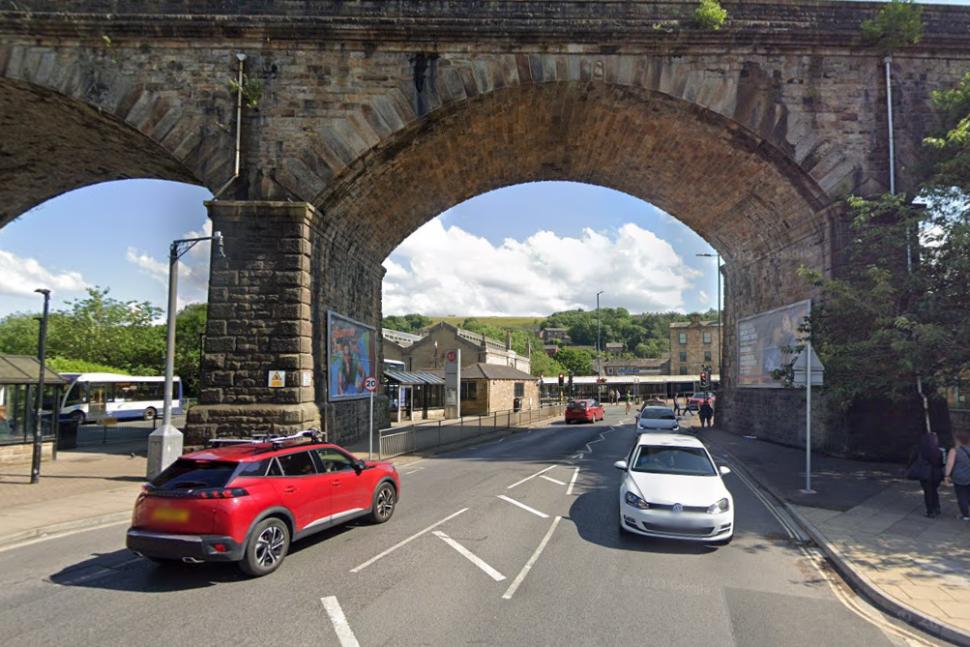







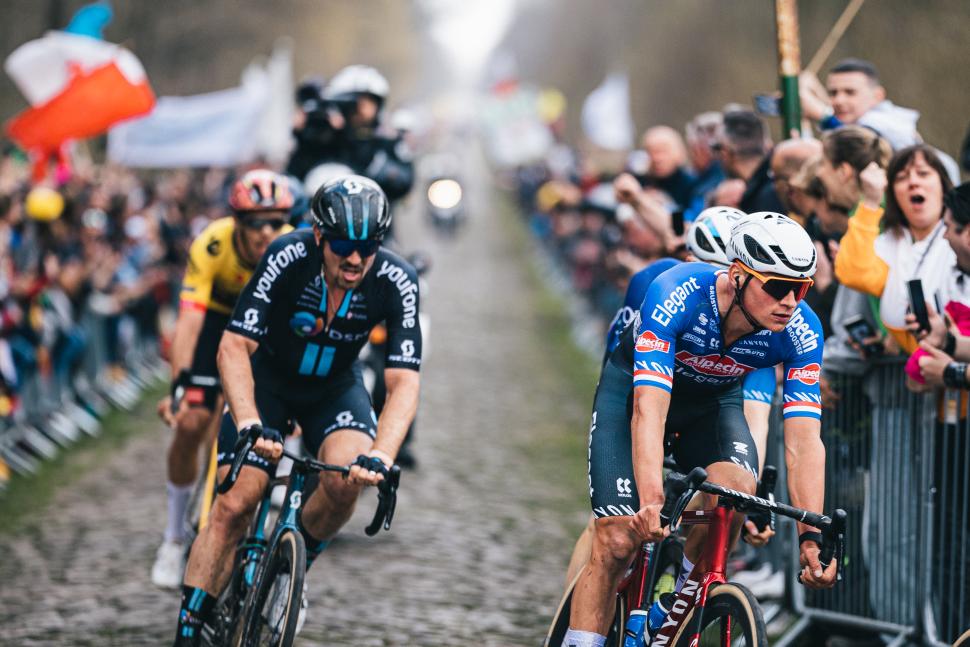

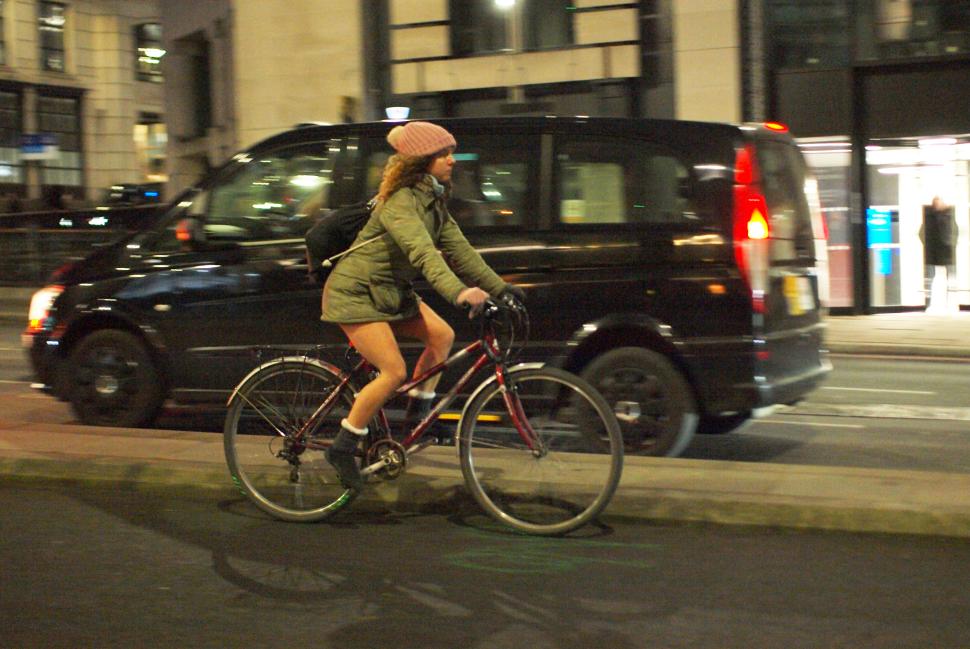
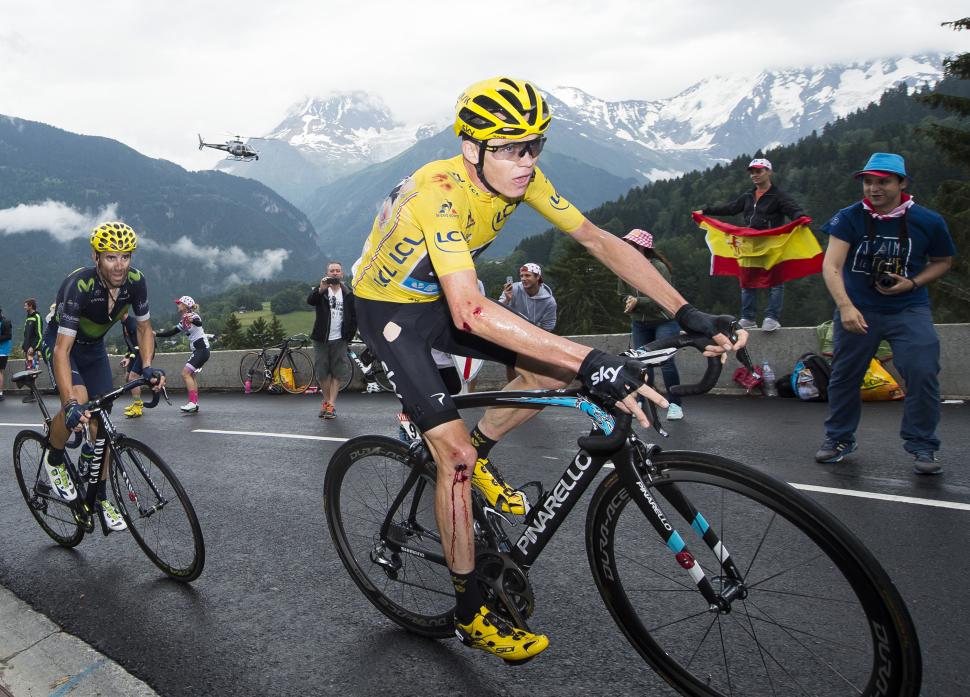



Add new comment
19 comments
A man called me a terrible mother for how I was taking my kids to school (Metro)
https://metro.co.uk/2025/02/05/cycling-kids-a-man-screamed-window-22421159/
The "gentleman" in question might want to consider the number of children killed and injured riding in cars every year in the UK (about twenty-five and eight thousand, respectively) compared to the number of children killed and injured riding in bike trailers; I'm sure there are some incidents but I can't honestly ever remember hearing of them so I'm assuming it's a very small number. Therefore it's actually the people who are driving their children to school when they could easily embrace an alternative (i.e. pretty much every able-bodied parent in an urban environment) who are deficient in parenting, and that's before you even begin to factor in childhood obesity contributed to by lack of exercise, lung and brain development stunted by pollution and the danger to which they are subjecting other people's children.
Hear hear. I entirely understand why those who currently drive their kids do so (and I was once a grumpy kid irked by the fact that my parents insisted I get myself to and from school, unlike some who regularly got a lift).
BUT campaigning for safe autonomous active travel for children (which is very often going to mean "cycling") - or cycling with their parents for younger kids - should be a no brainer. It should be a massive vote-winner also given all the benefits (studies are increasingly showing e.g. [1] [2]) that brings to children's development, health and happiness. Plus freeing parents from one daily chore.
... shouldn't it? Surely...?
The "gentleman" in question ...
Is just yet another moron driver
'Shrinking space for cars'
if only. Have you noticed how bloated, excessive and fat cars are these days Cllr?
Y'know - I think they're on to something: everything is shrinking around motor vehicles! Have you tried to get a modern mini in a garage that would fit a 60's mini?
I think the same has happened with jeans, if my efforts to get my 2025 gut into my 1995 Levi's are anything to go by then clearly the jeans have shrunk.
I was actually shouting at the tv to tell the cyclist to get out of the door zone.
https://youtu.be/3B4_NjJaSNs?t=325
The whole episode is a sorry enditement on the level of driving skill in the uk.
So many cammers in that vid making situations worse or committing offences themselves.
Useful video. Gives a chance to see other's points of view. Albeit not a lot of anticipation or consideration being shown (from the cammers). Very poor road-craft all round.
To be fair to them, it looks like a choice between that or a lot of sunken surfaces and ironworks further out.
Map of London cycle routes deemed unsafe for women after dark (Metro)
https://metro.co.uk/2025/02/05/map-shows-london-cycle-routes-labelled-un...
or:
https://www.bbc.co.uk/news/articles/cm27x5klxxlo
Quite. London Cycle campaign (as many groups do) mentioned this in their 2024 "What stops women cycling" article. Edinburgh has the Infra Sisters group campaigning on this topic.
It's nothing new. Research here from e.g. 2018 (I'm sure there are others). It's mentioned in LTN-1/20 - but not given sufficient prominence IMO *.
Even just in terms of pedestrian infra people have been commenting about dingy underpasses and mugger-friendly "places" for time.
But ... in the UK, in fact it *might* be new. For example Sustrans didn't seem to grasp this around a decade back in their guidelines. (As usual David Hembrow covered this in part of his "3 kinds of safety" article (2008!), and notes that this appears in standards for bridges and tunnels in NL here.
OTOH there is also the competing narrative of "Anything less than a car and I don't feel safe! There aren't random other people in my car like on public transport and I can lock the doors / speed away". That is certainly a feeling but it perhaps over-emphasises the safety of the car: people are still vulnerable going from / to it (often car parks or parking places also lack social safety...)
* LTN 1/20 has "Achieving a good level of social safety should be considered in the design process." That should be more like "Achieving a good level of social safety is vital to making the scheme usable by all and during a wider range of times. It may contribute towards a scheme being more 'attractive' in general. It should be a key consideration from the design process onward."
Link to full report
Thanks
Regan Dickenson sounds like a clown.
I didn't like cycle lanes in the days when I was training hard at a decent speed. That's because virtually none of them were fit for purpose: shoddy, token and unmaintained; poor infrastructure just to get cyclists out of the way; poor infrastructure unnecessarily mixing riders and walkers; pisspoor infrastructure that didn't form anything vaguely resembling a network.
Now I'm slower, I'm very happy to use some cycle lanes and paths. I still want proper facilities for everyone.
I do wonder if Mr Dickenson has ever cycled just to get from A to B as opposed to training/racing.
Oh, I doubt it…
Plenty of "I'm a cyclist, and I'm alright, Jack" types.
Strangely - most of these seem to be men, somewhere between teens and late middle age. It's almost as if despite these assertions there was something acting as a block for the young, the old, women, those with disabilities. What could that be, one wonders *?
* The vehicular cyclists know the answer to that! It's all this talk of danger - dangerising cycling! When it's statistically very safe in the UK. Very few are run over every year!
Perhaps (some will say) people are also just lazy? Or even incompetent - indeed some connect that to the existence of infra to help cyclists!